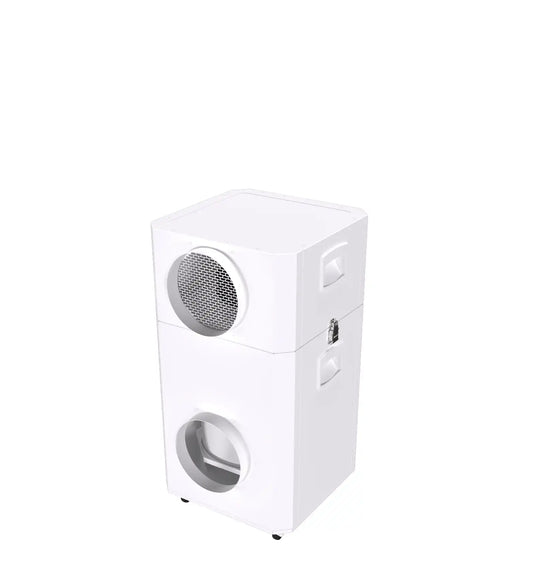The Science Behind HEPA Filters: How They Keep Your Air Clean

HEPA filters are among the most trusted tools for improving air quality, known for their exceptional ability to remove microscopic particles from the air. But how do these filters work, and what makes them so effective? Let’s dive into the science behind HEPA technology.
What is a HEPA Filter?
HEPA stands for High-Efficiency Particulate Air. These filters are designed to capture at least 99.97% of particles that are 0.3 microns in diameter, a size often referred to as the "most penetrating particle size" (MPPS). This standard ensures that HEPA filters are effective at removing dust, pollen, mould, bacteria, and even some viruses.
The Structure of a HEPA Filter
A HEPA filter is made of a dense web of randomly arranged fibre's, typically composed of materials like fiberglass. The fibres create a maze-like structure that traps particles as air passes through. The key to its effectiveness lies in the combination of fibre density, thickness, and the airflow rate.
How Does a HEPA Filter Work?
HEPA filters use three primary mechanisms to capture particles, each targeting different particle sizes:
Interception
Smaller particles (typically less than 1 micron) flow along the air streamlines.
When these particles come close to a fibre, they stick to it due to attractive forces.
Impaction
Larger particles, like dust and pollen, are heavier and cannot follow the air stream as it navigates the tight spaces between fibre's.
These particles collide with the fibre's and are trapped.
Diffusion
The smallest particles (less than 0.1 microns) move erratically due to their interaction with gas molecules (a behaviour known as Brownian motion). This erratic motion increases the chances of the particles coming into contact with the filter fibres, where they adhere.
Why 0.3 Microns?
The designation of 0.3 microns as the MPPS is based on scientific testing. Particles of this size are the hardest to capture because they are small enough to evade impaction and large enough to avoid diffusion. By capturing 99.97% of these particles, HEPA filters demonstrate their effectiveness across a wide range of sizes, including smaller and larger particles.
HEPA Filters in Air Purifiers
HEPA filters are integral to high-quality air purifiers, such as those by INOVA, because they effectively trap pollutants like:
- Dust and allergens
- Mould spores
- Pet dander
- Particles from bushfire smoke
- Bacteria and some viruses
When combined with other technologies, such as activated carbon filters for odour and gas removal, HEPA filters offer comprehensive air purification.
HEPA filters are a scientific marvel, combining physics and engineering to protect indoor air quality. By intercepting, impinging, and diffusing particles, they ensure your home or office environment remains healthy and pollutant-free.
For Australian conditions, INOVA’s air purifiers utilize medical-grade H13 HEPA filters, offering superior performance for even the most challenging air quality situations.
Explore the INOVA range of air purifiers to find the perfect solution for your needs.














